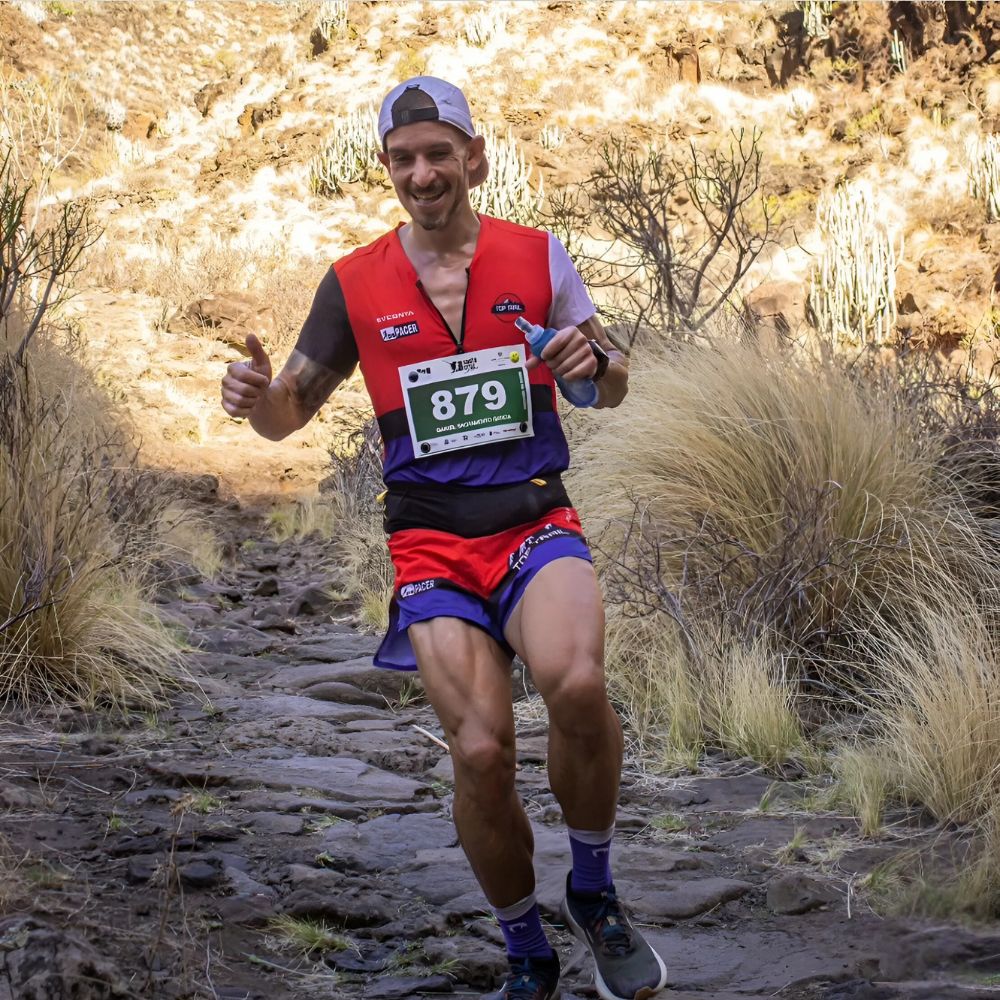How to prevent dehydration
CAREFUL! DEHYDRATION
Summer. Vacation time, enjoy new adventures, practice more sports, do what you can't during the rest of the year and... Remember the importance of drinking water in sports.
Today we bring you some useful tips to maintain good hydration while you exercise, so that you not only keep your performance at the best level, but you can avoid injuries, reduce recovery time and all the complications derived from dehydration.

WHY IS IT SO IMPORTANT TO HYDRATE?
Water fulfills important bodily functions, such as cooling, elimination of metabolic waste, even though sometimes it is not related to lubrication of the joints, also transport and absorption of nutrients... among many others, which is why it is very important if you want to avoid the appearance of injuries, cramps, fatigue and hyperthermia.
What will we take into account? As is logical, the amounts to ingest depend on your body mass, type and duration of physical activity, the characteristics of the environment, qualities of each individual to eliminate water, sweat, urine, feces, respiration and perspiration from the skin at rest. .
And it is that by the time we feel thirsty, "our machine" is already slightly dehydrated. If thirst appears during training and worse if it is during competition, we could say that we have little reaction time to reverse dehydration.
We will not only be alert to thirst, urine is another factor. Frequent, light-colored urination is a good sign. On the contrary, the lack of urine for long periods of time (more than 6 hours) and/or when it has a strong yellowish or even dark coloration, is a clear sign of dehydration. For this reason, after physical exertion, we recommend drinking water until you force the body to urinate.
We all know the importance of staying hydrated if we want to perform, especially in long duration events. But sometimes we ignore it. It must be taken into account that with a two to three percent weight loss that we lose through perspiration, your performance can drop by up to 20%, which is why it is of paramount importance to stay hydrated during physical activity. It is only enough to say that if up to 20% of it is lost, it could even cause death.
CALCULATE THE WATER YOU NEED
The first thing is to know our tendency to sweat and for this you can make a calculation of fluid loss during physical activity.
We propose this very easy test to know the approximate water you need:
Weigh yourself naked before training, during which time you should not eat, drink or use the bathroom until you have finished. After training, we weigh ourselves naked again and the difference between the two measurements in kilos (kg) multiplied by a thousand, will be our net fluid loss through perspiration in milliliters (ml). To obtain the sweat rate in milliliters per hour you must divide the resulting net value (in milliliters) by the number of minutes of exercise and multiply it by 60.
Example:
Weight before training: 76.5 kg
Weight after training: 75.8 kg
Duration of the activity:: 90 min
Calculation:
Net loss in kg: 76.5 – 75.8 = 0.7 kg
Loss in ml: 0.7 kg x 1000 = 700 ml
Loss in ml/min: 700 ml / 90 min = 7.78 ml/min
Loss in ml/h: 7.78 x 60 min = 466 ml/h
BE CAREFUL WHEN DOING THIS TEST, DO NOT PUT YOUR BODY TO THE LIMIT
Keep in mind that the gym will not be the same as running, what cycling, even variables such as (intensity, duration, temperature, humidity, etc.) But with this simple trick you can estimate how much fluid you should replace under different conditions. Although we warn you in advance that it is already difficult for the body to process more than 800 ml H2O/60'.
!EYE! This is not a magical and infallible calculation of knowing the correct hydration, remember that many factors influence the same variables, the body is different every day. Therefore, you must be aware that it is an approximation and observe the possible variations that the variables may suffer.
LISTEN TO YOUR BODY TO KNOW WHAT PHASE YOU ARE IN
Severe dehydration needs urgent medical attention. Although it warns before it happens, we recommend that if you notice confusion or moderate alteration it is time to take drastic measures because after this "from an estimated water deficit of a weight loss of 4% or more" we go on to the feeling of extreme thirst , heavy legs, hot flashes, strong cramps in the hamstring area, weakness, even tachycardia, drowsiness, vomiting. Be very careful that irreversible processes may arise.
FINAL TIPS
If it is a sports event, start with hydration the day before, during and after the event. We recommend drinking 500 ml two hours before exercise, between 100-150 ml every 15-20 minutes during exercise, and 500 ml after exercise “under normal conditions”.
If you feel thirsty, as a shock measure, drink a large amount of water so that it reaches the intestine which will absorb it and "stop" the rapid dehydration.
IMPORTANT. The ideal temperature of the liquid for a correct assimilation is (10-15°C) since if the liquid is very cold the organism must first heat the water to be able to assimilate, delaying the assimilation time.
It goes without saying that if the training is of low or moderate intensity and lasts less than an hour with low sweating and low temperatures, sometimes you can do without drinking water, be careful, but do not eat your head excessively.
Isotonic drinks? Only if we are going to lengthen the training, otherwise we will not burn the sugars that they usually include and these will go on to form fat. If you don't want to gain weight, don't drink.
It is important to replenish the mineral salts, it is not enough to replenish only the water, if you do not replenish salts, we will cause another problem "hypokalemia" (we will talk about it in another article).
Remember that if you take caffeinated gels it is important to alternate gels with caffeine and gels without caffeine, as this substance speeds up intestinal transit, causing diuretic effects and therefore is another way of worsening dehydration.
We hope you have enjoyed the article, greetings and see you next time.


